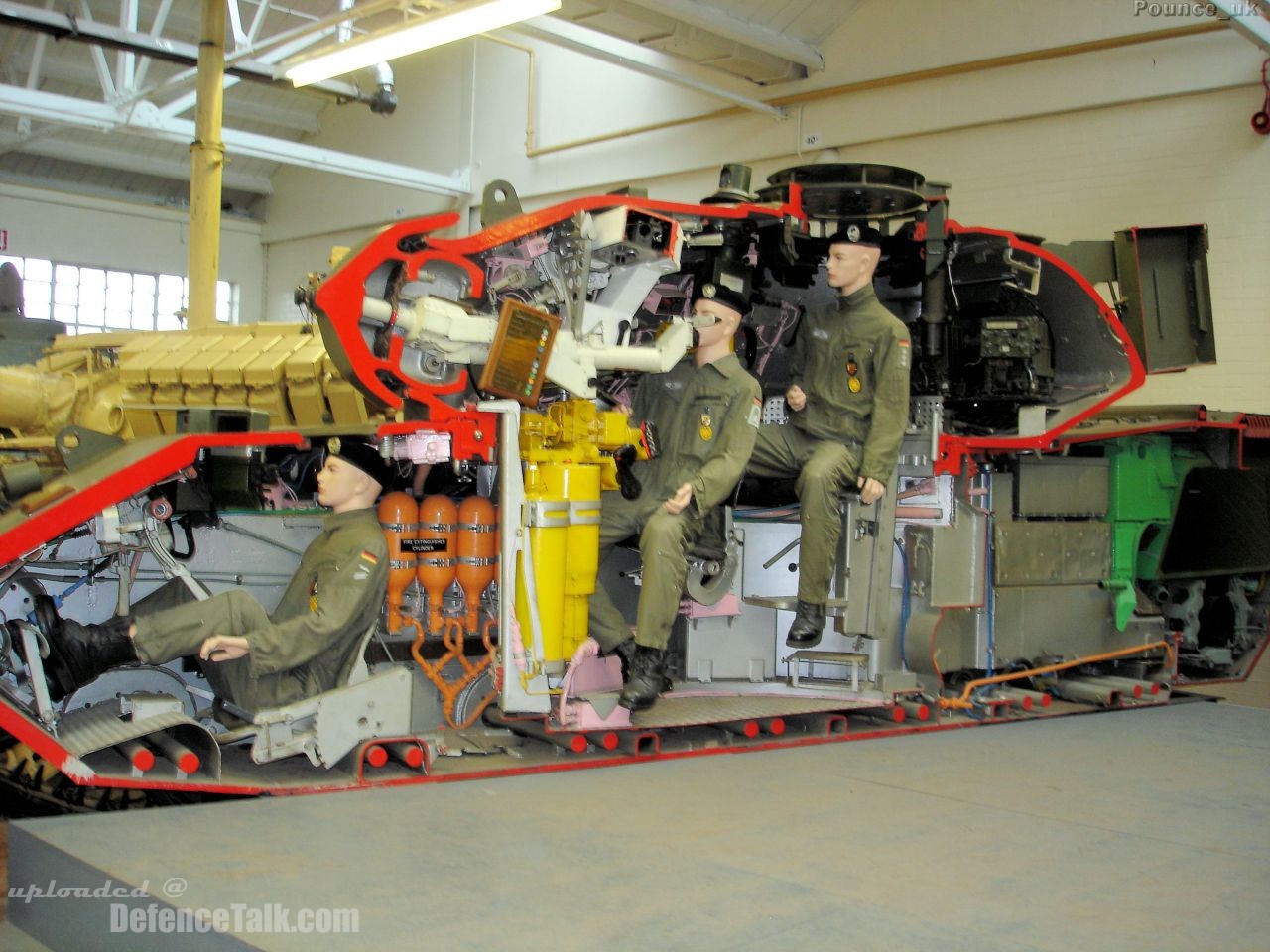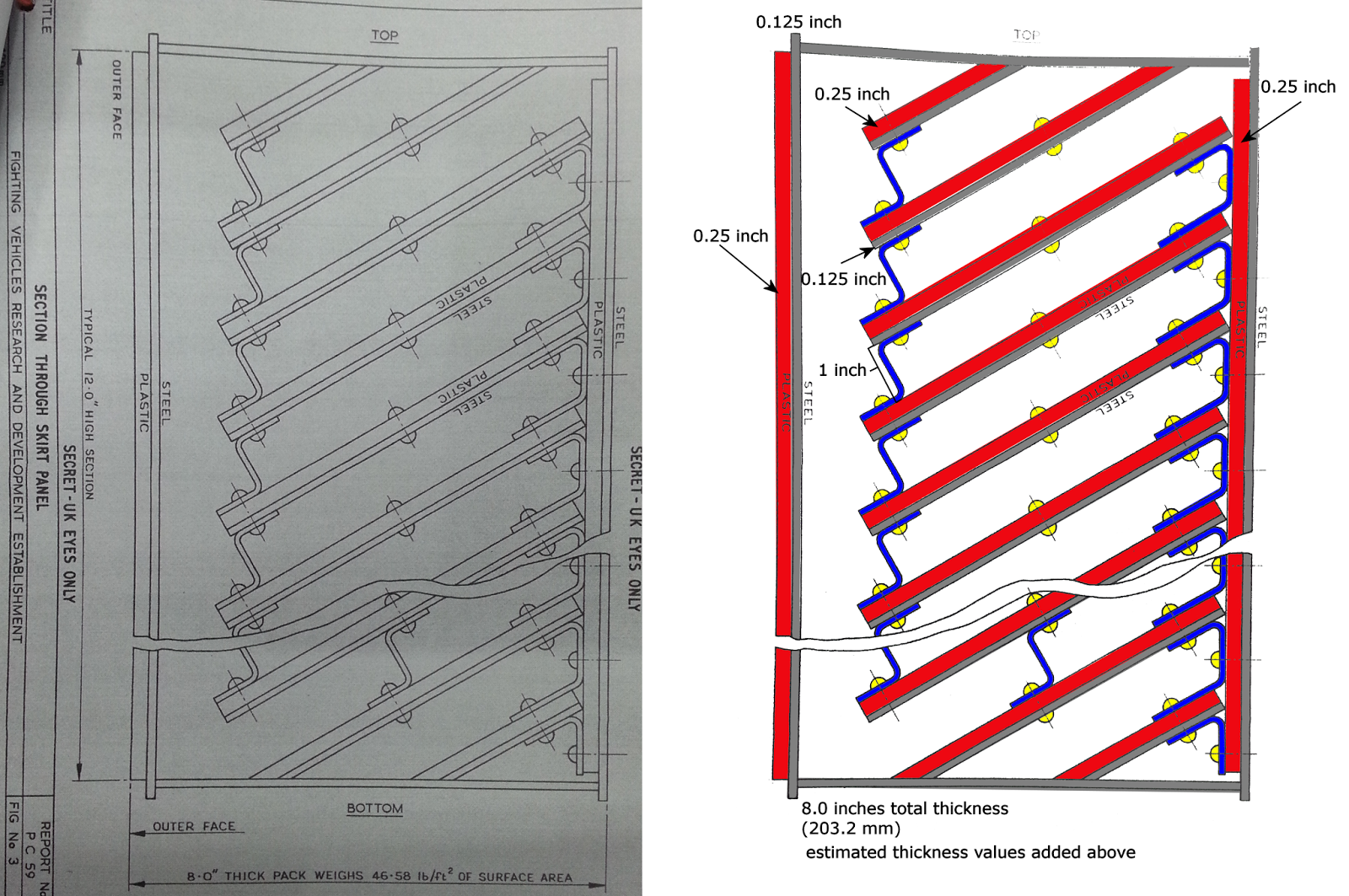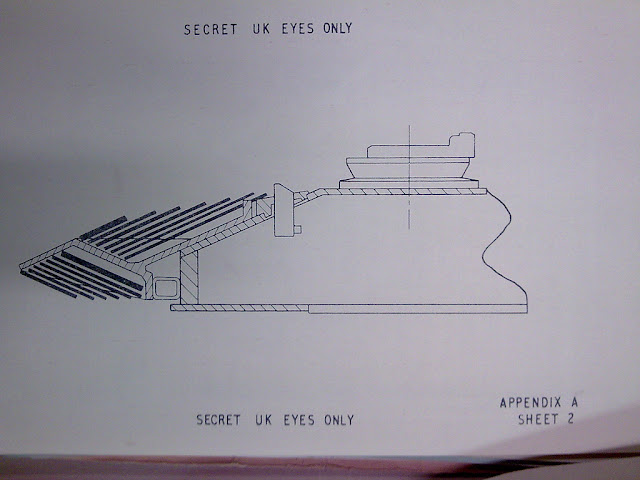You are using an out of date browser. It may not display this or other websites correctly.
You should upgrade or use an alternative browser.
You should upgrade or use an alternative browser.
Post-war German heavy tank?
- Thread starter SealTheRealDeal
- Start date
-
- Tags
- cold war heavy tanks tiger
Got to think of weight also. All well and good to have a tank that can take out the enemy at 2,000 meters, but if it can't get there...
The main advantages of a casemate system are size and production simplicity.Knowing they’d be on the defensive straight away, I’d say the Germans would go for a heavy Jagdpanther or redux of the Jagdtiger, using an improved 12.8 cm Pak 44.
Size is a lost cause with a heavy tank chassis. The Jagdtiger was absolutely massive.
As a tank being produced in peace time for a smaller army, production simplicity is a much lower priority.
Additionally, constantly neutral steering with a 50+ ton vehicle is going to mean more frequent repairs.
I think they'd opt for a turret to give their tank the tactical flexibility inherent to a turreted AFV, as well as greater utility should it ever be time to counter attack.
MatthewB
Banned
I'd like to see the Germans being the smartest ones of the field, realizing that with the late WW2 to early post-war advent of APDS and shaped charges that no armour is thick enough. So the Germans are the first to skip the heavy tank, and instead invest heavily in having the tank that hits the enemy first and often, thus reducing the need for survivability. Essentially the Leo I, ten years earlier.




By the time Germany gets back on its feet tank-wise, the HEAT Age is already in full swing. Notice how few (even the T-10 production counts as "few" by Soviet standards) postwar heavy tanks were actually built. So I can see a technical "heavy" tank as having thin armor but a monstrously big gun.
marathag
Banned
Or the M1A2 SEPv3, that's just shy of 70 tons. It has 1300mm equivalent RHA to HEAT and 800 to APFSDS.By the time Germany gets back on its feet tank-wise, the HEAT Age is already in full swing. Notice how few (even the T-10 production counts as "few" by Soviet standards) postwar heavy tanks were actually built. So I can see a technical "heavy" tank as having thin armor but a monstrously big gun.
Leo2s are almost as heavy.
Still MBT or Heavy Tank?
MatthewB
Banned
Indeed, Leo2 69 tons), Challenger 2 (69 tons) and Abrams (70 tons) are all in the heavyweight WW2 category, where the Tiger 2 weighed in at 68 tons. The difference is powertrain and suspension. It would be interesting to see a restomod museum or privately owned Tiger 2 with a gas turbine from a M1. The ultimate sleeper.Or the M1A2 SEPv3, that's just shy of 70 tons. It has 1300mm equivalent RHA to HEAT and 800 to APFSDS.
Leo2s are almost as heavy.
Still MBT or Heavy Tank?
marathag
Banned
So I think the goal of the German could be to go with the Heavy Tank on the HEAT battlefield, so just more Steel won't do.
The US did the early research on mitigating HEAT warheads, at the end of WWII,by using composite material held in aluminum boxes, a concrete made of quartz gravel and asphalt, IIRC that added 8 tons to a Sherman.
By Contrast, the US M103 and Brit Conqueror were over 60tons, much of it very thick steel armor. The Conqueror weighed slightly more, had 7" armor, while the M103 had up to 11" in its ginormous Turret, with a lightly armored hull while the Conqueror had more conventional heavy armor distribution on the glacis and turret
Both had around 850HP, just not enough motor for the weight, and the Transmissions and differentials were more for 45 ton tanks than 60
So how do the Germans get a 60 ton tank that's HEAT resistant with reliability? They have an idea what their Allies worked on, and what they did in the War
Multiple Boeing T50 300HP turbines geared to a generator with electric drive, like Porsche used in the War with the Elefant, but twice the power
It took some time where turbines could be run as sole source of power from the low initial torque output, but with generators and electric drive, you have all the torque you need at 1 rpm, while turbine spin at their best speed, and no mechanical reduction needed. That why railroads use electric dive and no transmissions
and neutral steering is a breeze.
For firepower, you use the Brit 120mm, and for armor you keep a 4" basis with the add on HEAT resistant armor blocks. Just what's needed for 1962
The US did the early research on mitigating HEAT warheads, at the end of WWII,by using composite material held in aluminum boxes, a concrete made of quartz gravel and asphalt, IIRC that added 8 tons to a Sherman.
By Contrast, the US M103 and Brit Conqueror were over 60tons, much of it very thick steel armor. The Conqueror weighed slightly more, had 7" armor, while the M103 had up to 11" in its ginormous Turret, with a lightly armored hull while the Conqueror had more conventional heavy armor distribution on the glacis and turret
Both had around 850HP, just not enough motor for the weight, and the Transmissions and differentials were more for 45 ton tanks than 60
So how do the Germans get a 60 ton tank that's HEAT resistant with reliability? They have an idea what their Allies worked on, and what they did in the War
Multiple Boeing T50 300HP turbines geared to a generator with electric drive, like Porsche used in the War with the Elefant, but twice the power
It took some time where turbines could be run as sole source of power from the low initial torque output, but with generators and electric drive, you have all the torque you need at 1 rpm, while turbine spin at their best speed, and no mechanical reduction needed. That why railroads use electric dive and no transmissions
and neutral steering is a breeze.
For firepower, you use the Brit 120mm, and for armor you keep a 4" basis with the add on HEAT resistant armor blocks. Just what's needed for 1962
Never thought I'd see a positive reference to that.like Porsche used in the War with the Elefant
marathag
Banned
Electric drive has its advantages.Never thought I'd see a positive reference to that.
Less internal volume for components, and no driveshafts needed. fine control of track speed on each side, as good as hydrostatic. Downsides, expensive copper for bus bars, and generator and motors needed extra cooling, and pretty much had to be aircooled, and a bit heavier
Elefant was underpowered. As a mobile pillbox, wasn't bad. Effective in Italy, if there were good bridges where it needed to go.It just wasn't what the Panzer Divisions needed
At work.
Elefant as feilded used conventional engine(s?) and drive trains.
There was/is a discussion about 'Alternate tanks' here abouts on the forums.
The technical details of the German early turbine experiments have been touched on/adressed.
It was this research/development that kind influenced GE and the Abram's turbine.
The Panther experiments had a turbine pumping its out put into a second system as derived from U-Boat systems then into the primary drive train then into a 12 speed gearbox.
Something like 24 Horsepower per ton was produced.
Hopefully some one will be along with either the links or the details again.
Personally?
I'd reckon a some what Panther/Tiger 2 looking machine would be in the offing. I recall folks mentioning the 'E' series of designs.
Cheers.
Elefant as feilded used conventional engine(s?) and drive trains.
There was/is a discussion about 'Alternate tanks' here abouts on the forums.
The technical details of the German early turbine experiments have been touched on/adressed.
It was this research/development that kind influenced GE and the Abram's turbine.
The Panther experiments had a turbine pumping its out put into a second system as derived from U-Boat systems then into the primary drive train then into a 12 speed gearbox.
Something like 24 Horsepower per ton was produced.
Hopefully some one will be along with either the links or the details again.
Personally?
I'd reckon a some what Panther/Tiger 2 looking machine would be in the offing. I recall folks mentioning the 'E' series of designs.
Cheers.
Yeah I didn't draw this for this thread, I could do a new pic of the same tank with HEAT resistant armor blocks if I can find the time.Problems is, that as folks have pointed out, its the HEAT age, and just adding more armour makes the HEAT round that hits you more lethal.
Or the M1A2 SEPv3, that's just shy of 70 tons. It has 1300mm equivalent RHA to HEAT and 800 to APFSDS.
Leo2s are almost as heavy.
Still MBT or Heavy Tank?
The difference between MBT and heavy tank is their role. Weight is irrelevant.
The concept of heavy tank goes back to WWII when they needed a big tank with a big gun for breakthroughs. But the technology of the day meant these tanks did not have the mobility for penetration and encirclement, that role went to the medium tanks. Medium tanks could kill other medium tanks but usually had trouble against the heavy tanks.
In the early 1960’s there was a revolution in technology. Nato introduced the 105mm and the Soviets the 115mm guns. These could be mounted on medium tanks and kill the heavy tanks. At the same time ATGM like Saggers appeared and could kill any tank. Therefore there was no reason to build heavy tanks. The up-gunned medium tank now did it all and was recategorized as the main battle tank. Arguably an exception would be the Chieftain, which was an MBT in name only that performed the classic heavy tank role. It’s mobility was no better than the Conqueror and worse than the T-10.
By the 1980’s another technological revolution in very powerful engines allowed third generation Western tanks to be heavier than the old heavy tanks. But they were still MBTs as they performed both breakthrough and penetration.
IMHO it’s unlikely Germany would build a heavy tank. First heavy tanks as explained above were obsolete by the second generation. The last heavy tanks appeared with the first generation tanks of the early post war era. During much of this time West Germany was not allowed to rearm.
The West Germans got back in the tank building business with the Leopard 1 in the 60’s. Even at this point their armament industry was stunted and unable to develop their own main guns, which is why they went with the British L7. OTOH West Germany had a first rate automotive industry. This allowed them to leverage their advantage into building a tank with the best mobility of it’s time.
The Leopard 1 made a lot of sense for the West Germans at the time. It was exactly what they needed. A tank that can both hold ground if the Soviets attacked and counterattack to retake lost ground or even East Germany. The only reason for a heavy tank is to mount a bigger gun. But why? The 105 was good enough with improved ammunition. This hypothetical tank would still be insufficiently armored against HEAT warheads. It would also cost a lot of money building two types of tanks instead of just one MBT.
The West Germans got back in the tank building business with the Leopard 1 in the 60’s. Even at this point their armament industry was stunted and unable to develop their own main guns, which is why they went with the British L7. OTOH West Germany had a first rate automotive industry. This allowed them to leverage their advantage into building a tank with the best mobility of it’s time.
The Leopard 1 made a lot of sense for the West Germans at the time. It was exactly what they needed. A tank that can both hold ground if the Soviets attacked and counterattack to retake lost ground or even East Germany. The only reason for a heavy tank is to mount a bigger gun. But why? The 105 was good enough with improved ammunition. This hypothetical tank would still be insufficiently armored against HEAT warheads. It would also cost a lot of money building two types of tanks instead of just one MBT.
HEAT warheads with the effectiveness necessary to be a threat to these kinds of heavy tanks didn't really appear until about 1960. Both heavy tank programs (T43 and FV200 series) started in earnest around 1950, which is also near when OP wants this German program to start.
marathag
Banned
Steel boxes filled with a 'plastic' that was mostly quartz gravel, with asphalt and a small amount of wood flour to act as the resin to bond it all together. Besides HEAT resistance for the increased stand off distance, it was effective at reducing the power of the molten jet, and gave an RHA Equivalent to reduce AP penetration , but far less than a solid block of steel would have, but still noticeable, since the outside plate was 1" thick and inner plate of the box less.At work.
What are they made of? How do they work?
Cheers.
This could almost be called Chobham, Ver 0.3, after Ver0.1 being just plain concrete poured on a tank
A later version, Type 2 Chobham


Share:
